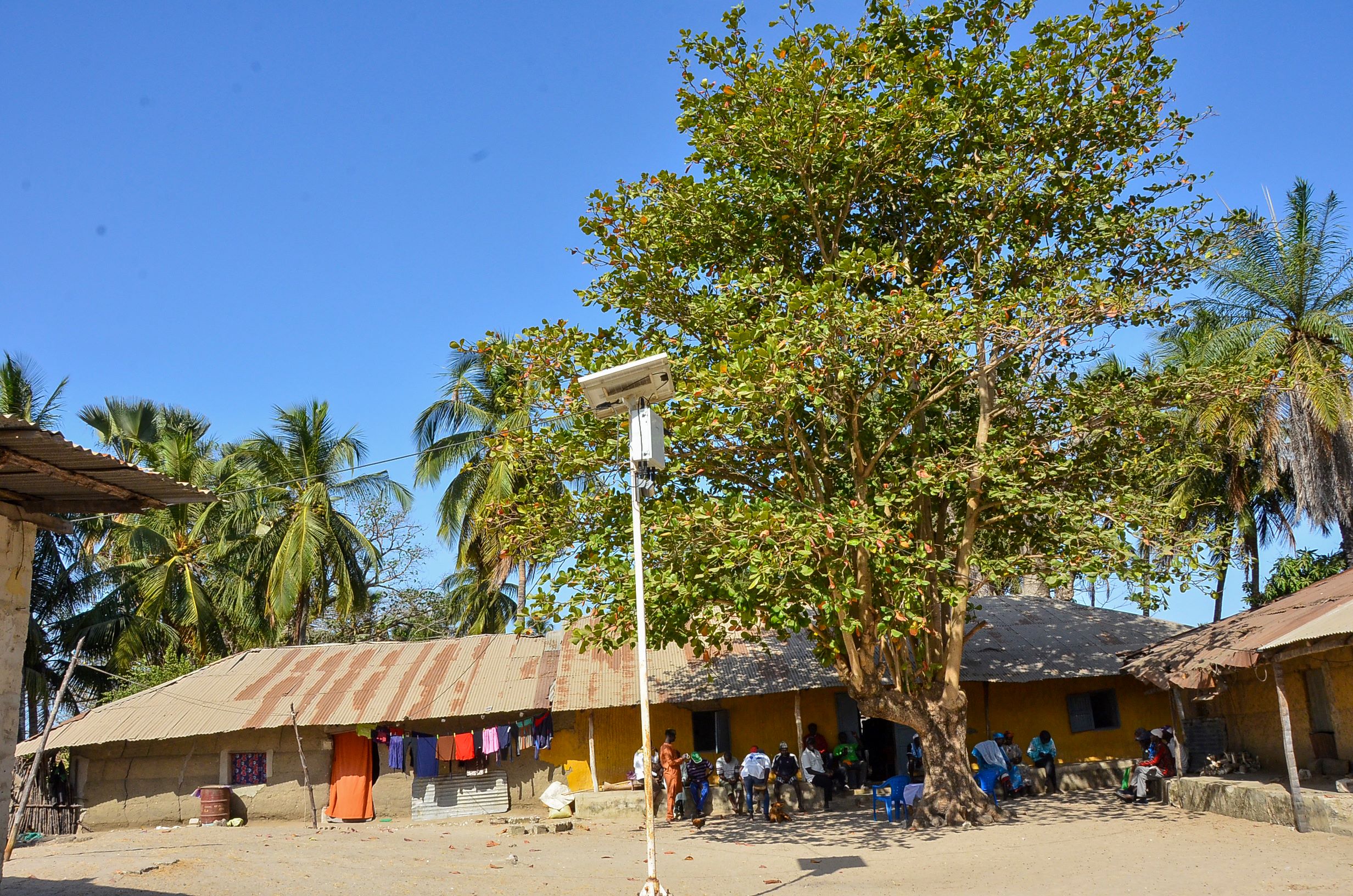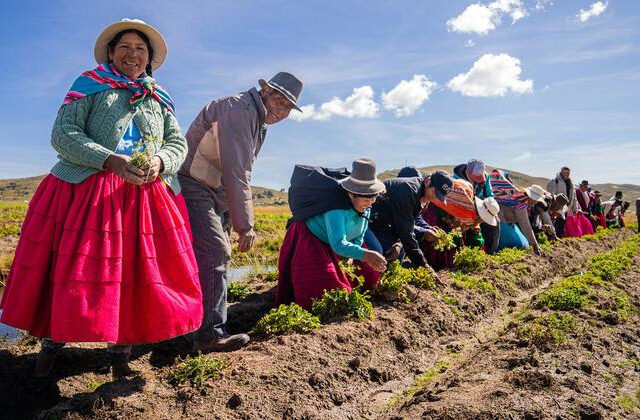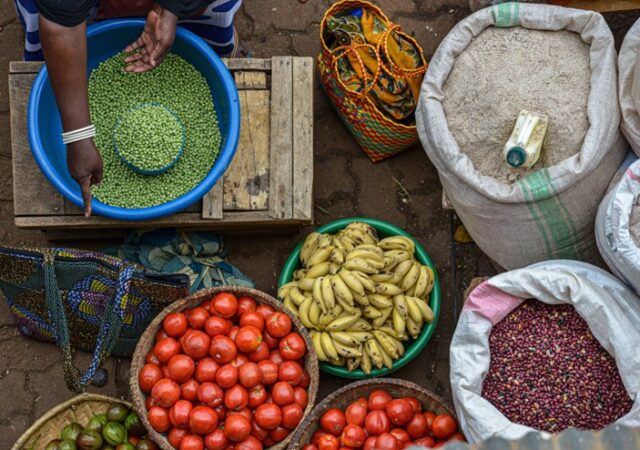Balancing Energy Access and Environmental Integrity in Rural Electrification: Spotlighting the role of RePower in Niomoune’s Community Resilience—Senegal
In Senegal, while urban electrification nears 90%, rural areas remain largely underserved, with access lingering around 30%. For island communities like Niomoune, in the Casamance region, the electrification gap is more than a statistic; it’s a lived reality compounded by transportation difficulties.
Niomoune is surrounded by stunning natural beauty, with rich marine and freshwater ecosystems, lush mangroves, and serene island landscapes. Yet, despite this abundance, the community faces a profound paradox: a dire lack of both electricity and potable water. This contradiction formed the heart of the Green Africa Youth Organization’s (GAYO) recent engagement under the RePower project in the community, which seeks to demonstrate how decentralized renewable energy interventions can transform underserved communities without compromising their environmental and cultural fabric.
Niomoune’s Plight Amidst Rich Natural Landscape
The journey to Niomoune was an awakening. Transportation is laborious, requiring canoe travel across estuaries, reminding us why infrastructure remains a challenge.
However, the warm breeze, quiet mornings, and powerful sense of community offered both serenity and inspiration.
This article explores Niomoune’s unique challenges, the transformative potential of decentralized energy solutions, and the delicate balance between progress and preserving the community’s serene ecosystem.
In a focus group discussion that highlighted the community’s major concerns, women walk long distances for freshwater while children miss school to fetch fuelwood.
Oyster farming, one of the key local livelihoods, and abundant marine and freshwater resources suffer due to a lack of cold storage.
The connection between water and energy stands tall among these and other challenges. Electricity isn’t just for light; it’s needed for food preservation, education, ease of life, social prosperity, and dignity.
Ironically, though Niomoune is surrounded by water, most of it is saline—a result of freshwater and seawater mixing.
The community needs electricity not just for economic activities but for life itself, to desalinate water, to store it, and to reduce the physical and emotional burdens on its people to access and use water, a basic resource in abundance all around them.
The RePower Rural Electrification Model
Introducing energy infrastructure risks disrupting the very tranquility that defines Niomoune. How can we deliver solutions without importing the pollution and noise plaguing urban grids?
The Repower project seeks to validate a modular and scalable microgrid system that combines solar photovoltaics, battery storage, and, where relevant, biomass energy. Its vision transcends electrification and infrastructure: it is co-creating energy solutions with communities, not just for them.
It strives to harmonize energy access with environmental integrity by deploying low-impact, community-centric solutions.
The design process also embeds circular economy principles such as repurposing agricultural waste for bioenergy and promoting energy-efficient appliances to reduce ecological strain, ensuring SDG compliance of the entire project.
In Niomoune, RePower adopts a community-led approach. Through extensive baseline studies, participatory design, and community learning, the University of Nairobi (UoN) and GAYO have mapped out solutions, prioritizing;
-
Solar-dominated microgrids to preserve quietness and reduce carbon footprints.
-
Battery systems to stabilize the power supply without diesel backups
-
Solar-powered water pumps and desalination units, integrating the water-energy nexus.
-
Culturally sensitive placement of infrastructure to protect sacred lands and biodiversity.
-
Sustainable education and ecosystem preservation models that encourage both modern and traditional knowledge
Community Capacity for Monitoring
Ultimately, to ensure these impacts are well accounted for, GAYO is training young people in such communities to lead data collection and analysis on the key impacts of such interventions on the community and create a channel for feedback and realignment.
These youth-led data initiatives form the backbone of our feedback and accountability mechanism, ensuring community voices drive real-time improvements.
Beyond data, GAYO is a leading social innovation through capacity building on the productive use of energy and energy efficiency for the youth and women who are key stakeholders to ensure sustainable energy use.
The focus on gender inclusion is equipping women with the skills and knowledge to use energy productively for agro-processing, business development, and water-related services.
Conclusion
Through off-grid microgrid solutions, mostly solar and wind, the resilience and cultural heritage of Africa’s off-grid communities are preserved. Like Niomoume, aside from wanting economic development, there is a deep desire to preserve the lands and environment as an inherent co-shared responsibility of indigenous communities.
For Africa, co-creating micro-grid interventions with off-grid rural communities is beyond technological intervention; it’s building the capacity of the people to co-develop these solutions and maximize the benefits, leading to productive use of energy.
Such approaches prioritize environmental integrity, community agency, and shared prosperity anchored on the Sustainable Development Goals (SDGs).
Advancing the renewable energy agenda, both for climate action and energy access, is important but yields very minimal benefits to the community if not rooted in the principles of just transition, community co-creation, and leadership.
These considerations should be the backbone of electrification and energy extension initiatives to achieve community resilience and accelerate climate action








An interesting discussion is worth comment. I think that you should write more on this topic, it might not be a taboo subject but generally people are not enough to speak on such topics. To the next. Cheers